What should be your first print-on-demand merch product on Amazon?
Amazon Merch on Demand is a well-paid undertaking for most sellers, but it can turn into a disappointing journey for some. So what makes or breaks this side gig?
In two words, informed decision-making.
If you’re thinking of entering the print-on-demand (POD) merch scene on Amazon, you’re probably asking yourself where and how to start. This decision is critical as it will define your initial performance and can shape your growth in the future.
In this article, we’ll guide you to the right choice.
Factors that should influence your decision
As you’ve probably guessed, deciding on your first POD merch item and design shouldn’t come from guesswork. Instead, it should be based on thorough research and data.
Luckily, with Merch Informer, you can gain access to vital insights that will support your choice.
Let’s see how.
Nice-specific search volume
The first factor to consider when determining the most opportunity-rich merch category and niche should be popularity. Are Amazon shoppers actively searching for t-shirts, hoodies, or phone cases? Are they showing more interest towards certain niches, like movie titles, sports clubs, or holidays?
The best way to find out is to examine the search volume of category- and niche-related keywords. The higher the search volume, the more popular the category or niche.
Market size
Let’s assume you’ve uncovered a merch space with a promising search volume. We’ll put it at 3,000 searches per month, as that’s considered attractive for general keywords.
Is this discovery sufficient to make a decision? Not really, since market size matters, too.
The term conveys how well the merch category or niche have been developed. Are there a lot of other listings in the space? What’s the Average BSR of all listings? What about that of bestsellers?
These data points will help you determine whether there are actual sales generated in the market. It will also give you a broad idea of how competitive the space is.
Small vs. large markets
Sometimes, a small market size could be an opportunity. For example, imagine that you’ve found an extremely popular keyword, yet few people sell listings optimized for it on Amazon. This could mean that you’ve discovered a low-hanging fruit.
To confirm or deny your hypothesis, use Average BSR. If you spot that the few sellers who have tapped into the niche are not successful, something’s probably amiss.
Perhaps they’ve misunderstood the intent of the keyword. Or maybe their designs aren’t as attractive as users would hope. If you think that you can do better than them, by all means, go ahead and compete.
On the flip side, we have large and well-developed markets. They enjoy incredible search volumes and a plethora of bestsellers. Here size plays a positive role, since it allows for junior entrants to carve a piece of the pie. It might be small, but the cake is so big that it feeds the whole class.
Competition level
Next, examine the competition level in the merch category. The best way to do so is to use the Keyword tool in Merch Informer.
Apart from revealing the search volume of words and phrases, it also displays the competition level of every keyword. You’ll notice that it can be “High”, “Low”, or “Medium”.
Ideally, you should be aiming for keywords that have high search volumes, yet low competition levels. These are excellent options, as they’re easiest to rank for. For example, suppose you see that “St. Patrick’s Day t-shirts” has a search volume of 50,000 and a low competition level, while “St. Patrick’s Day hoodies” has a search volume of 10,000 and a high competition score. Without a doubt, the best choice here would be to enter the St. Patrick’s Day t-shirt space.
Creation process
The creation process is another factor that shouldn’t be underestimated. With POD merch, the good news is that you’re only creating the graphic design as opposed to manufacturing the actual product itself.
From this perspective, it’s best to research the complexity of the top-selling designs in the category or niche. For example, the creation of phone cases could be much more demanding when compared to t-shirts. Why? Because you’re working with a much smaller space, meaning that you’ll have to be more creative about adjusting your design to fit the product.
This research can be conducted manually. But to make things faster and easier, use Merch Informer to browse the bestselling listings via the Merch Hunter tool.
Average prices
Finally, let’s talk about prices.
When entering a merch category or niche, it’s fundamental to have a clear understanding of the prices you can set. Of course, there are no boundaries and you can go as high or low as you like. But this will ultimately influence your performance.
Overall, the unwritten rule is to always start with a price around the average in the market. For instance, if the average price is $20, you can launch your print-on-demand merch listing at between $19 and $21. Why? Because this is the zone in which you’ll enjoy the biggest competitive advantage. You’ll be positioned similarly to the rest, meaning that you won’t be underselling or overselling your designs.
More importantly, the price you set for your listing will determine the royalties you receive. Therefore, a higher listing price will result in higher earnings per sale. In other words, choose a merch category and niche that stands out with a greater average price.
Prioritizing factors when choosing your first merch product
So far, so good. But what about the weight of these factors? Are some more important than others? Is there a way to prioritize them?
In short, yes, some factors should influence your decision more than others. Here’s a recommended prioritization method:
- Search volume & competition level – we suggest viewing niche popularity and competition as a combo. These two factors are key when selecting a merch category or niche to enter. Why? Because without any people searching for your products, it doesn’t matter how well-designed and well-optimized they are. Sales won’t be achievable. In addition, even if you set your eyes on the highest searched for category, if the competition is too fierce and aggressive, it will take you ages to see results.
- Market size – the next factor in terms of importance is market size. We mentioned that the average BSR will help you confirm whether listings in the space generate sales. This is the next big question to answer after you’ve covered whether there is a well-developed market with active consumers.
- Average prices – although pricing is important, it comes third on our list. This is because your price can change over time, meaning that you don’t have to stick to the average price in the market forever. As you gain more experience and grow your popularity, you can afford to rise above other listings and ask customers to pay more for your designs.
- Creation process – the difficulty level of creating your merch designs is the least important for your decision. Why? Because if your listing pays off in the long term, investing more time and effort into producing your designs will be worth it.
What should your first POD merch item be?
With all of the factors thoroughly discussed, we are now ready to conclude what your first POD merch item should be.
We advise starting with the t-shirt category, as it’s without a doubt the most popular on Amazon Merch on Demand. It has the lowest average BSR (11,501), an attractive average price ($18.81) and nearly 200,000 active buyers every month.
However, keep in mind that the category is extremely competitive. If you perform detailed keyword research, you’ll notice that the majority of broad and general words are very difficult to rank for. This is why we suggest opting for more niche-specific keywords.
For example, the word “baba tshirts” has low competition, yet attracts 7,350 monthly searches. What does Merch Hunter have to say about the bestsellers in the niche? The average BSR is 1,068,551, which is not ideal, But remember, earlier we mentioned that this could be a reflection of poor designs, poor listing optimization, inadequate keyword use, or other factors.
We revealed that some of the popular words used together with the main keyword “baba tshirt” include “dad”, “family”, “funny”, “gifts”, “birthday”, and “special”. If you were to enter this niche, we recommend creating a listing title along the lines of “Funny special family baba tshirt birthday gift for dad”. The design should follow the best practices in the niche. In this case, we noticed that the majority of products had a dark background color and feature text and imagery as part of the design.
Create a funny slogan and make it more vibrant with an image element, if possible. Price your listings around the market average, and optimize it with additional keywords in the description.
Keep in mind that there is no single answer to the question of “what is the ideal first POD merch item”. You can be successful in different categories and niches, as long as you’ve made strategic decisions backed by data.
Final thoughts
If you think it’s time you get in on the Amazon Merch on Demand action, we fully support you. Follow the tips from above and use Merch Informer to discover all of the insights to make the right choices.
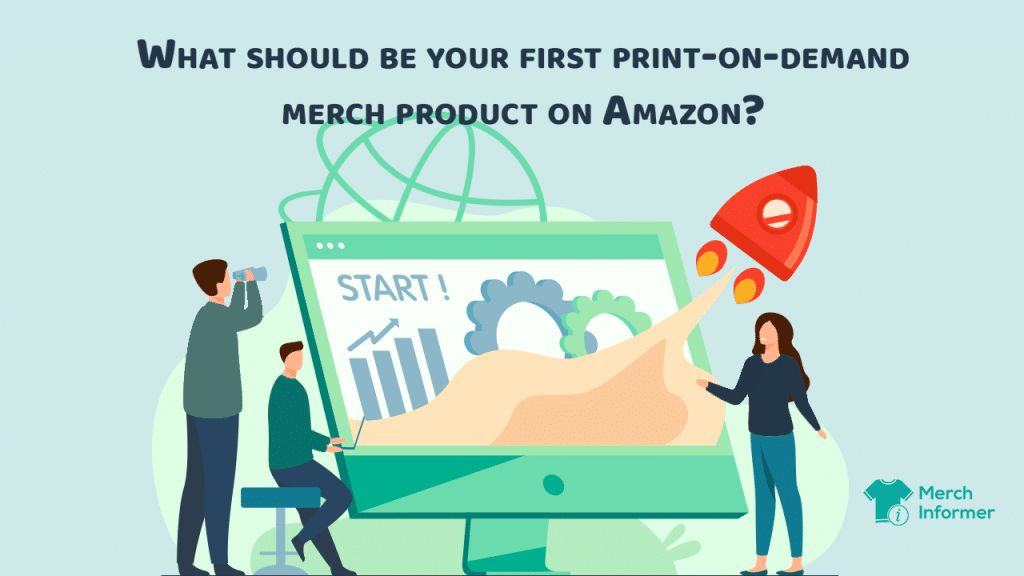
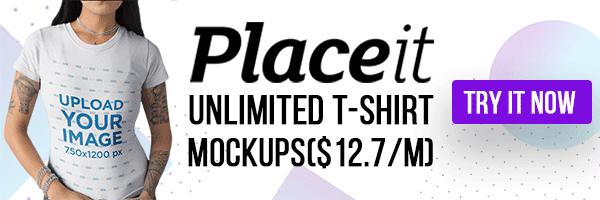



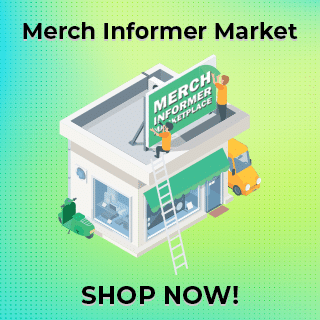
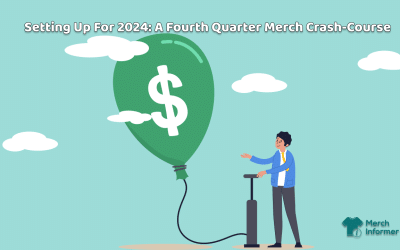
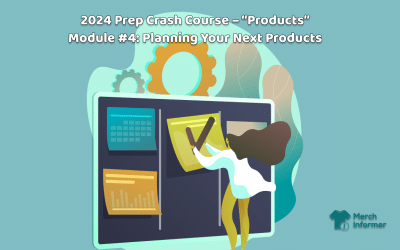
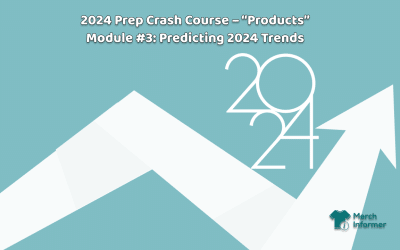
Thank you, this actually clears up a lot of confusion I’ve had when it comes to understanding this POD type of business. I’m new and of course, apprehensive about starting something new.